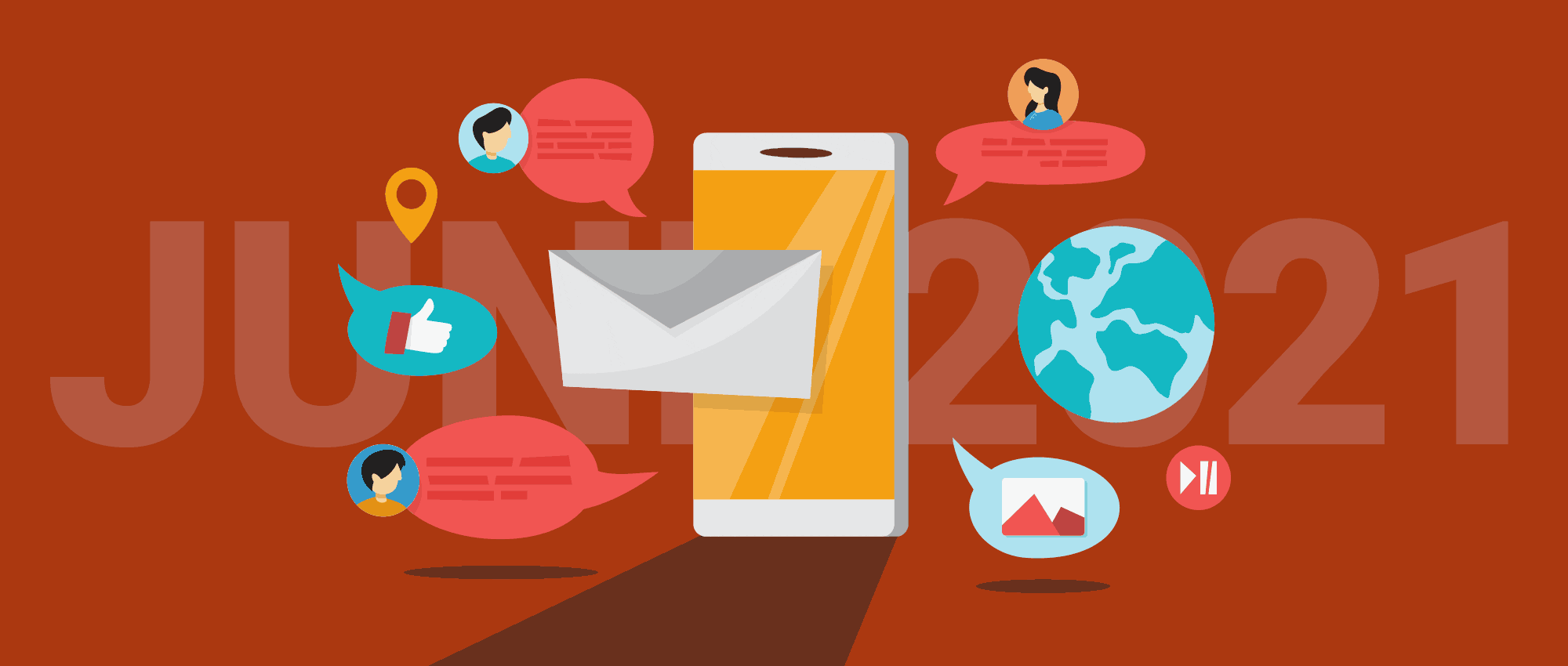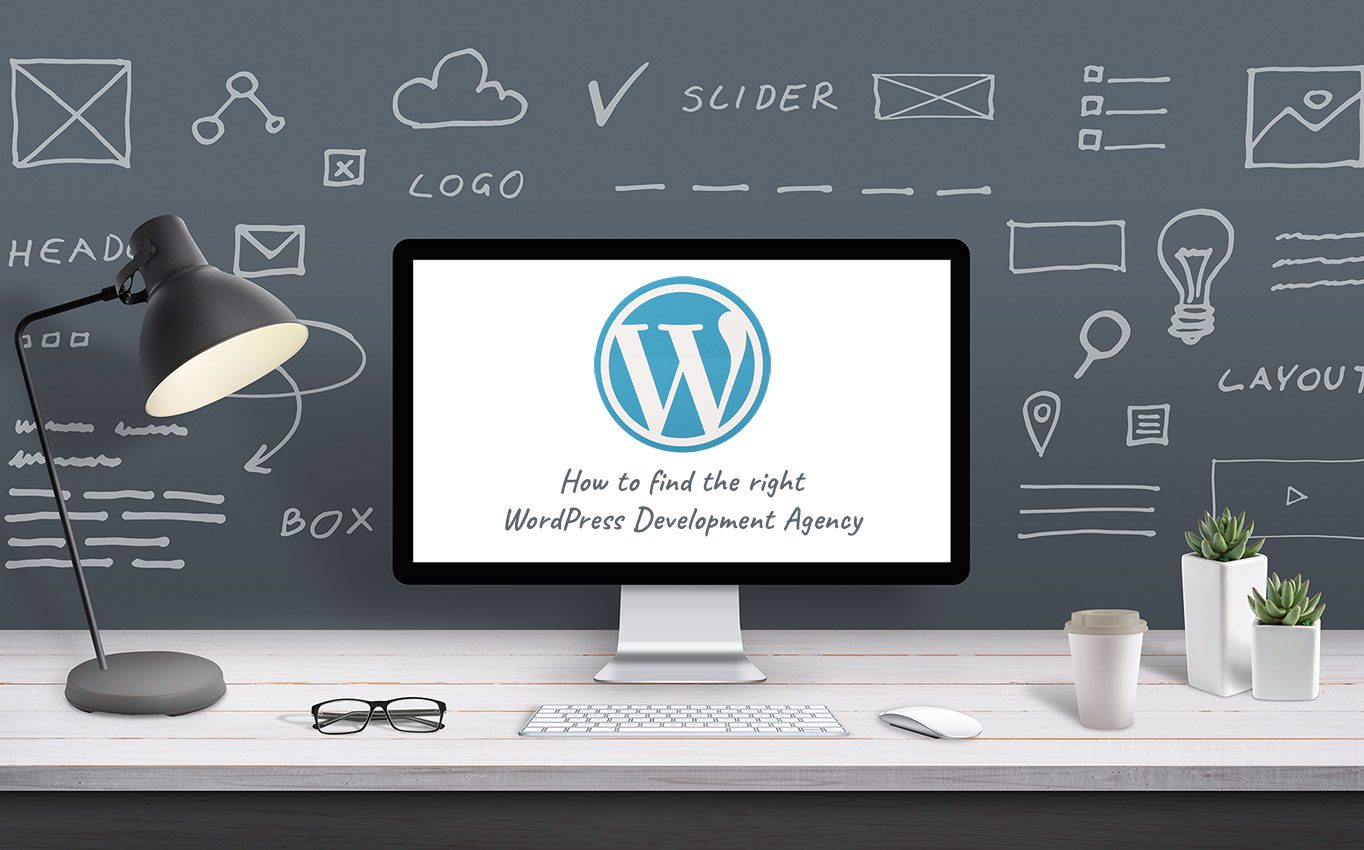
Article
Top 5 Web Design Tips, Insights & Digital Stories: June 2021 Edition
PUBLISHED:June 24, 2021
UPDATED:November 22, 2021
Welcome to the latest edition of our Top 5 Web Design Tips, Insights & Digital Stories round-up for June 2021.
This month we take a look at website navigation and ask ‘Does navigation always have to be at the top?’.
We also take a look at the latest developments from Linktree, the latest logo design trends and go back in time with some popular websites to see what they looked like in their infancy.
Let’s get cracking!...
Is Left-Side Vertical Navigation a viable design option on websites?
Many moons ago, when I was a much younger website designer, it seemed that there were far fewer restrictions when it came to what you could do when designing a website.
We only had desktop and laptop computers to consider, so that gave us the benefit of a large canvas to work on as well as not having to worry about responsiveness.
SEO was also largely unknown, so web designers often created sites entirely out of images (mainly because there we so few fonts available for web use – aka web-safe fonts), which enabled designers to control the look of every single element in the browser window down to the pixel level.
Another important factor that impacted web design in the early days was that many brands had very little content to put online. This meant that navigation only needed to include a handful of links, so the design could be quite creative, with left-side navigation being quite a popular solution.
As websites grew and screen sizes changed dramatically with the invention of mobile devices, left-hand-side navigation was used less and less, with the preference being for horizontal navigation at the top of the screen for desktop devices and the now ubiquitous ‘hamburger menu’ for mobile devices.
But every now and then, left-side vertical navigation still makes an appearance.
Is l-h-s navigation a viable option when considering UI & UX?
Page Laubheimer recently wrote an article for Nielsen Norman Group that argues the case for left-side vertical navigation. It’s an interesting read and certainly gives me a warm fuzzy feeling when I look at the examples included within the article, making me pine for those carefree days of designing websites however I wanted to.
But as much as I’d like to think that l-h-s navigation could be a viable option, I can’t help but always come back to the fact that smaller laptops with a much shallower screen height will scupper this approach to navigation design 99% of the time.
Page Laubheimer does eventually raise this issue:
“A very long vertical menu may have some items below the page fold. We know, from much research, that users pay more attention to information above the fold than to that below the fold. They might not even scroll at all if what they see above the fold looks useless for their current goal.”
With this statement, Page seems to be agreeing that deep left-side vertical navigation leads to bad UX because the user may be looking for links that are ‘below the fold’, meaning they would have to scroll to see them.
The Arbor website (above) has quite a deep l-h-s navigation which runs below the fold on shallower screens.
This problem is amplified by users who not only have smaller screens but have also chosen to add multiple toolbars to their web browser, reducing the viewport even further.
So is there ever an instance where l-h-s navigation is a viable option?
I would say that l-h-s navigation is possible, but only when the site contains very few pages so that the full navigation is always visible without the need to scroll.
And remember, if you do wish to explore l-h-s navigation for your website, consider the other elements that you may need to include within that space, such as:
- Company logo
- Social links
- Copyright information
- Privacy links
All of these items require screen spaces and could easily double the height of a left-side navigation bar.
The history of Websites
In the above story, I spoke briefly about my younger years as a web designer. It got me thinking about design trends from the nineties and early 2000s and how things have changed so much.
Wouldn’t it be great if we could find out what our favourite brand websites looked like during those times?
Well, turns out we can…
A couple of LWDA team members recently noticed the launch of Famous First Websites. A site that’s aiming to record a visual timeline for the websites of recent tech startups.
It’s a brave move. The owners are asking brands to submit visuals, showing how their website has changed since their launch.
You can sign up to a mailing list to get notified of new additions. I honestly wonder how popular this will be, but I do hope that we see more recent brands submit their sites for cataloguing.
Web Design history with Wayback Machine
If you feel a little let down by the lack of content at Famous First Websites, then never fear, because the Wayback Machine is here!
Wayback Machine offers a true history of websites. With more than 583 billion pages in its records, you can pretty much find any major brands website and take a gander at what it looked like in its infancy.
Remember when Apple was about to launch the original blue & white iMac in August of 1998? I bet a few of you can remember the TV adverts, but you probably can’t remember what the Apple website looked like at the time. Well, here it is…
Impressive, huh? Let’s look at some of the highlights…
- Positioned in the top left of the browser.
- Very small because desktop screens were tiny compared to today’s HD cousins.
- Only web-safe fonts in use, with everything else being made of images.
Don’t worry though. Things started to get better in the year 2000 with gel buttons.
I know. Shocking stuff.
Linktree rolls out Request & Support Me eCommerce buttons
I have to say, as an Instagram user for many years, I do really like Linktree.
Many brands have taken to adding the service to their Instagram accounts. Even the free version adds a level of increased usability for your followers, guiding them directly to key pages of your site with one click.
The paid-for version adds the ability to customise the look of your Linktree page, but also includes additional functionality. The latest of which is Commerce Links.
With the new Support Me and Request links, individuals and brands can raise funds for startup projects or request payments in exchange for services. Great for entrepreneurs.
We particularly like the idea that Support Me links will help charities raise money directly on the Instagram platform.
We’ve worked with several charities and not-for-profit organisations in the past and believe that this functionality will be welcomed with open arms.
If you are looking to sell physical goods via Instagram, then you can also investigate Spring Stores.
15 Logo design trends in 2021
If you are a brand designer or have any interest in logo design, you are probably aware of the successful series of books from Logo Lounge.
Most design students and creative agencies have at least one of their books on their shelves, and it looks like they are gearing up for another release by publishing their 2021 logo trend report.
The latest report features an incredible 15 logo design trends. I do think they must scratch their heads for suitable category names, but it’s definitely interesting to see what’s going on in the world of branding in 2021.
As designers, we always strive to find unique branding solutions for our clients. But like all creatives, we get our inspiration from somewhere. Whether it’s conscious or not.
Take a look at the trends here and let us know on social media which are your favourites. I personally like the Trans Flip and the Merger categories.
If you are in the market for a new website but are also considering a brand refresh, you may find our article on the importance of great branding for a new website to be a valuable read.
Samsung redesigns the floppy disc icon for a new era
We started with a slightly retro-themed story, so we thought we’d finish with one too.
Remember the floppy disc? No? Don’t worry, you’re not missing much. They could only hold 1.4MB of data and were ceremoniously dumped by Apple as a medium for storing files when they released the iMac, which was the first desktop machine to abandon the floppy disc drive.
So why has Samsung revived the floppy disc icon?
Well, in what we think is a rather nifty design move, Samsung have decided to update the icon for a new era. Adding elements that reflect modern data storage devices.
The new icon includes characteristics of SD cards, SSDs and one could argue that of a mobile SIM card.
The new design is being used to promote Samsung’s range of storage devices and media. We rather like this ‘Save the environment’ still from one of their recent ads.
Samsung x Edelman: Samsung Memory (Copyright © Samsung, 2021)
Global branding agency Edelman are responsible for the creative and we love the simplicity.
Like any good logo design, the new icon works on many levels:
- Can be used small without losing its clarity
- Looks great in just one colour, but could easily be adapted to incorporate multiple colours
- Perfectly represents the product range
- Easily adaptable to any medium
More details about the project can be found over at It’s Nice That.
Thanks for lending us your eyes
We hope you found the above selection of web design tips, insights & digital stories useful.
If you’d like to tell us your thoughts on left-side navigation, inform us of your favourite web design trends, or comment on any of our monthly stories, follow us on Twitter, Facebook or LinkedIn and let us know by commenting on the relevant post.
We hope that you’ll visit us again at the end of July for the next round up.
If you missed the May edition, you may want to check out the 5 Tips to combat a drop in organic traffic story.
Otherwise, feel free to get in touch if you’re looking for a digital consultant for your brand. We’re always happy to discuss new projects and will be open and honest with our advice.






